|
As I am originally from the Netherlands and learned to do goldwork at the Royal School of Needlework in London, I was, until a couple of years ago, not very familiar with all the medieval goldwork embroidery that has survived in Germany. There is a lot! But it is sadly almost always published in German. Not very accessible for the worldwide embroidery community or indeed embroidery researchers from outside of Germany. The German embroidery community is very small and mainly interested in cross-stitch and whitework. I am thus sometimes a bit at a loss for whom these magnificent German publications were actually written. They are often full of very technical details. Things makers want to know, not necessarily your average archaeologist or (art) historian. Last year, I uncovered another one of these brilliant publications on the textile finds from the imperial and episcopal graves of Speyer Cathedral. Let me introduce you to some pretty amazing pieces! Firstly, we have the mantle of Philip of Swabia (1177-1208) made in the last quarter of the 12th or the early 13th century. On it are two medallions with goldwork embroidery. One shows Christ, the other Mary. The mantle's fabric and probably also the embroideries came from Byzantium. Philip had married Irene Angelina (1181-1208), a daughter of Byzantine emperor Isaac II Angelos (1156-1204). He thus had easy access to textile products from Byzantium. The embroidery is executed on a piece of fine samite with silk and gold threads. The goldwork is quite fine with about 40 parallel threads per centimetre. Interestingly, the gold threads are couched in normal surface couching, apart from the turns. These are done in underside couching (for instance also seen in the Reitermantle in Bamberg (DMB Inv.Nr. 3.3.0003)). For years, this combination of normal surface couching with a turn in underside couching eluded me. Why did they do that? When it came up in a discussion with Cindy Jackson recently, she immediately came up with a perfectly logical explanation: the turn is neater/easier. I had never thought of that. Although I know that many people struggle with making neat turns, I never found them hard or daunting to do. Doing an underside couching stitch with silk comes with the risk of breaking your couching thread. However, I perfectly understand that it is probably worth the risk when turns are not your forte. Mystery solved! Another spectacular find is a pair of episcopal socks from one of the bishop's graves. The embroidery is completely executed in underside couching. It is therefore possible that these luxury socks were made in England around the year 1200. However, as we have seen in the contemporary mantle of Philip of Swabia, the underside couching technique was by no means exclusively practised in England. My gut feeling is that underside couching = Opus anglicanum = England is sometimes a little too eagerly applied for goldwork embroidery found in continental Europe.
Apart from describing the original excavations in the early 20th century, the publication also has very good chapters on medieval textile techniques (weaving, finger looping and tablet weaving). Another chapter compares the finds from Speyer with contemporary finds from elsewhere. The chapters on the scientific investigations of the finds are also very good with a whole chapter on the gold threads. If you are interested in archaeological textiles (some with goldwork embroidery), this book is for you. As the book is a little older, you can sometimes find it second-hand. However, you might be able to get it through a library. Literature Herget, M., 2011: Des Kaisers letzte Kleider. Neue Untersuchungen zu den organischen Funden aus den Herrschergräbern im Dom zu Speyer, Historisches Museum der Pfalz Speyer.
14 Comments
Last week, I showed you the set-up of my little experiment with underside couching. Today, I'll show you the exciting results. Show exciting results? Hmm, you probably need to take my word for it. This is goldwork after all and it does not photograph well. But first I need to make a confession. When I first experimented with underside couching for the epigraphy conference early last year, I took a thicker piece of chevron woven silk as my base. You can read all about my stitching nightmare here. The bottom line was that I needed a rather strong/thick 3-ply linen thread for the stitching. This made the back of my sample rock-solid and hard to stitch through when ending my threads. I thus concluded that you would always need a rather thick 3-ply linen thread. The 2-ply linen thread used in the Middle Ages must have been something of a super thread to withstand the force of underside couching. Nope. Wrong. Let me explain: This time, I tested four different types of silk twill, two different types of goldthread and three different types of linen thread. They all worked. I only broke my linen thread once (!). Conclusion: my very first piece of red chevron woven silk was probably not suitable for underside couching. What did I use this time?: - "G" in the pictures stands for Goldschild 40/3 linen thread (3-ply). - "B" stands for Bockens 35/2 linen thread (2-ply). - nameless 26,5/2 bio-linen thread (2-ply) from Egon Heger. - "RG" stands for real gold thread with a silk core (Stech 80/90 from Maurer) - "G" stands for gilt thread with a polyester core (Stech 80/90 from Maurer) - 65, 72 and 103 are the weights of the different silk twills I ordered from Sator - one piece of madder-dyed silk twill lighter in weight than the lightest (red) silk twill from Sator. - #22 chenille needle and 40ct Zweigart Newcastle linen base. I worked two rows with each linen thread, six rows in total for each type of goldthread. As said: all combinations work. However, I do have my preferences. Firstly, the 3-ply Goldschild and 2-ply Bockens linen threads are very round and stiff/hard. They don't compress easily. Whilst this probably is not much of an issue for underside couching, it is with normal couching. The linen thread pushes my goldthreads away from one another. In comes the more loosely plied bio-linen thread from Egon Heger. This thread is flat and compresses easily. Definitely my first choice! Added bonus of the 2-ply versus the 3-ply thread, the back of your embroidery is softer and it is now totally possible to end your threads on the back by weaving them in. The weight and actual weave of the silk twill also plays a major role. Again: it all works. However, the thickest silk twill (103 gms, petrol coloured) is my favourite. The "hills-and-valleys" of the twill weave are very pronounced and can thus be easily followed to accurately space your stitches. This pronounced twill pattern is also seen in the historical pieces and from the drape, you can clearly see that the historical pieces used a heavier weight silk too. The madder-dyed silk and the red silk (65 gms) were okay to work with too. However, I didn't like the blue 72 gms silk as I had trouble stitching back into the same hole. What I liked the best though, is the real goldthread with the real silken core. It is stiffer than the gilt thread with the polyester core. This means that the stitches form a slight arch (see picture above). The embroidery becomes more textured. Just like in the originals. Combine these little arches with the more pronounced "hills-and-valleys" of the thicker silk twill and you come pretty close to the historical pieces (see picture below). In addition, the real goldthread did not stress the silks or my linen thread so much. It was therefore easier to work with. So, why then did we switch from real goldthreads with a real silken core to gilt threads with a polyester core? Costs. Whilst a 10 gr spool of the "fake" thread costs about €14, the same amount of the real deal will set you back at about €64. I can now hear you think "well the difference in the pictures is not THAT spectacular, so why spend the money?". Me answers: but the stitching experience and the results ARE very different and better. It just does not show up well in a photograph. In my ever-quest to get closer and closer to the historical pieces, I have decided to use this real goldthread with the real silken core for the next run of my Medieval Goldwork Course (I hope I can get hold of enough of it). I am pretty sure that I will make a few more converts :).
P.S. For those of you who are EU-citizens, you might want to consider signing the petition for new fundamental rights in Europe, initiated by Ferdinand von Schirach. Thanks! For the epigraphy conference held in Munich next week, I am working on several samples of lettering in goldwork embroidery. More information on the conference can be found in part I of this series. Today we will look at the goldwork lettering on the Vic cope made in England between AD 1350-75. The cope was probably made for, but certainly worn by, Bishop Ramon de Bellera of Vic in Spain. It is all worked in underside couching, typical of Opus Anglicanum. When looking for online information on this particular cope, I found the excellent website of the Museu Episcopal de Vic. The website is in English and there is an abundance of information on their textile collection. Amongst which is a lovely video on the Vic cope (see below). This was my first foray into underside couching and I am going to share my explorations with you below. Unfortunately, my stash did not contain a piece of silk velvet, so I opted for red silk with a twill weave. The original underside couching on the Vic cope is done on three layers of fabric: linen, velvet and plain silk. After the embroidery was finished, the plain silk was carefully cut away. My reconstruction omits the layer of velvet. Although the article (see below for a link to the download) on the recent conservation of the cope mentions a lot of details on the materials used, it does not disclose the width of the gold threads used. However, the pictures in the literature suggest a very fine thread. I decided to go with Stech vergoldet 50/60 CS, which is finer than smooth passing #3. It has a width of 0.12 mm. I started by transferring the lettering of the word 'Epiphania' by using the prick and pounce method. This is the original method for pattern transfer and it would probably have been used by the makers of the Vic cope in the 14th century. I deliberately left my Siena water paint a little thick so that I could scrape off mistakes easily. From the pictures, I could tell that the gold threads were actually couched down in pairs. The couching pattern used for the lettering is the traditional basket weave. I would start with a long stretch down the length of the letter and use the twill pattern of the silk to get my spacing correct between the couching stitches. I found this not too easy as you'll need a rather large needle for the linen couching thread. For the first four letters ('epip') I used Fil de lin glace, au Chinois, #40 colour #363 (yellow), which I bought at Maison Sajou when I was in Paris. It is rather thick and not very strong. Even when I changed from a needle #7 to a chenille needle #22, it broke frequently. No matter how carefully I tried to guide the thread through the fabrics. What else could I use? First up was Londonderry linen thread #5070 cornflower 50/3. It is only slightly thinner than the Maison Sajou thread used before. On stitching the 'H', the thread broke three times. This is far less than when I used the Maison Sajou thread. One other thing that eludes me at the moment: what does one do with the tails of the goldthreads? After consulting with a re-enactment lady on Instagram, she said she plunges them and ties them back with the linen couching thread. Sounds reasonable, don't you think? Except for the fact that the stitches on the back are rock solid and I can't weave any thread tails through them at all. Maybe I should use a finer linen thread? Next up was Goldschild 50/3. Although the numbers suggest the thread is comparable in thickness to the Londonderry, it is actually less thick. It did break easily, especially on the small bar-like parts of the 'A'. These parts are really tricky to do as you can't keep the basket weave pattern going. You'll end up with a kind of underside couching satin stitch. The quick turns for both the gold threads and the linen couching threads take their toll. I had one more brand of linen threads I could test: Bockens Knyppelgarn. I started with the rather thin Nel 90/2 and this was no good as it broke every other stitch. But when I tried the thicker Nel 35/2, it was much better. A similar amount of breaks to the Londonderry thread. But again, I am unable to tie back the goldthreads with the linen couching thread on the back. Since I know that medieval stitchers were not averse to using knots, I did the same. Works a treat. So what did I learn from this experiment? Quite a lot actually! Firstly, turning your threads at the design line is done with an underside couching stitch. There is no additional 'normal' couching stitch on top to achieve this. Secondly, underside couching is a bit like constantly plunging. No matter how drum taut your slate frame is, it will lose a bit of tension. Thirdly: my silk did not take the stitching very well. Fibres of the weft were pulled out. Fourth: the stitching is rather harsh on your body. My fingers are all swollen and my back aches (muscle ache). How the flip did they do it back then? They worked through three layers of fabric. That puts even more strain on your body and on the linen threads. I must have some of the parameters wrong. Suggestions are greatly appreciated! Literature
Brow, C, G. Davies & M.A. Michael (eds.), 2016. English medieval embroidery. Yale University Press. ISBN: 978-0-300-22200-5. Calonder, N. & A. Wos-Jucker, 2008. Conservation of the Cope of Bishop Ramon de Bellera, Quaderns del Museu Episcopal de Vic 2, pp. 83-99. Grimm, J.M., 2021. A hands-on approach - Epigraphy in medieval textile art, in: Kohwagner-Nikolai, T., Päffgen, B., Steininger, C. (Eds.), Über Stoff und Stein. Knotenpunkte von Textilkunst und Epigraphik. Harrassowitz, Wiesbaden, pp. 141–147. P.S. Did you like this blog article? Did you learn something new? When yes, then please consider making a small donation. Visiting museums and doing research inevitably costs money. Supporting me and my research is much appreciated ❤! |
Want to keep up with my embroidery adventures? Sign up for my weekly Newsletter to get notified of new blogs, courses and workshops!
Liked my blog? Please consider making a donation or becoming a Patron so that I can keep up the good work and my blog ad-free!
Categories
All
Archives
July 2024
|
Contact: info(at)jessicagrimm.com
Copyright Dr Jessica M. Grimm - Mandlweg 3, 82488 Ettal, Deutschland - +49(0)8822 2782219 (Monday, Tuesday, Friday & Saturday 9.00-17.00 CET)
Impressum - Legal Notice - Datenschutzerklärung - Privacy Policy - Webshop ABG - Widerrufsrecht - Disclaimer
Copyright Dr Jessica M. Grimm - Mandlweg 3, 82488 Ettal, Deutschland - +49(0)8822 2782219 (Monday, Tuesday, Friday & Saturday 9.00-17.00 CET)
Impressum - Legal Notice - Datenschutzerklärung - Privacy Policy - Webshop ABG - Widerrufsrecht - Disclaimer


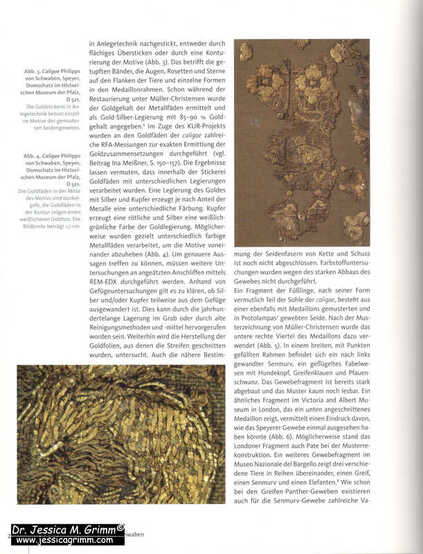
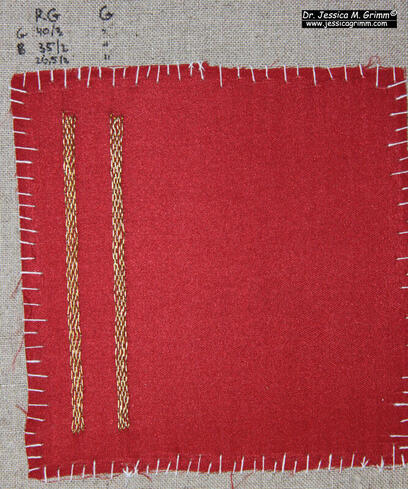
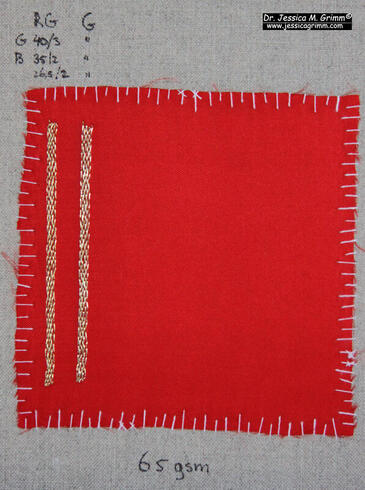
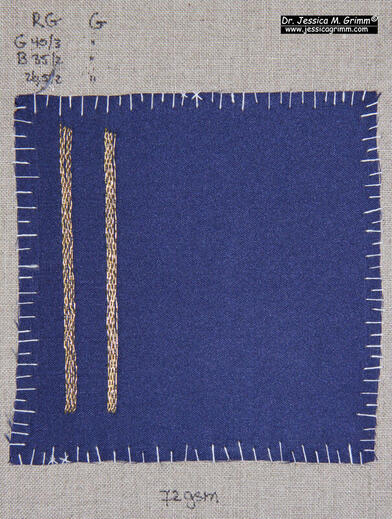
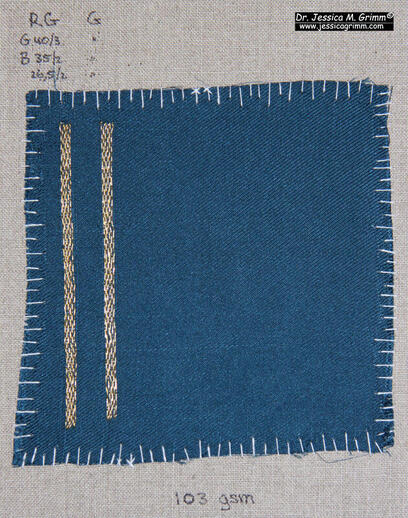
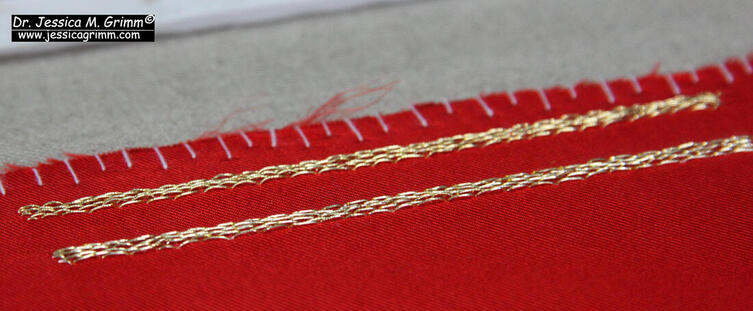
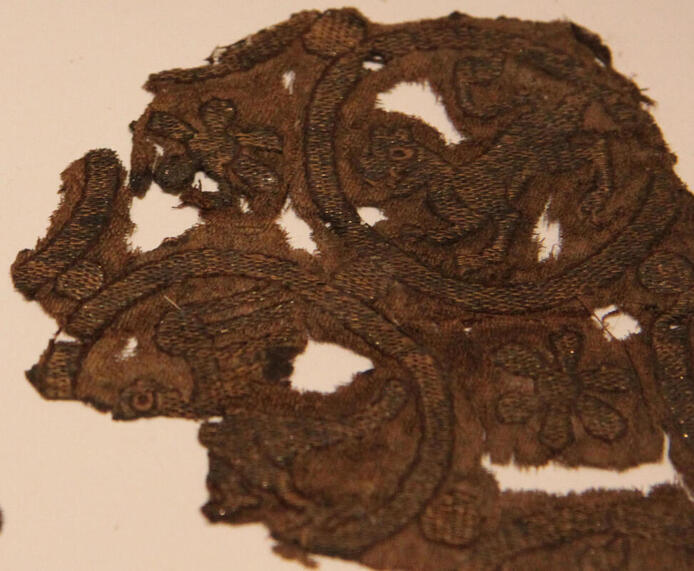
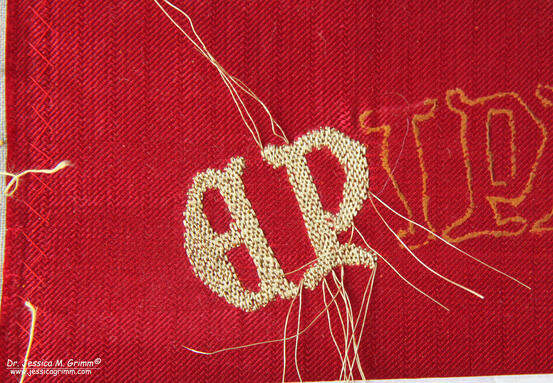
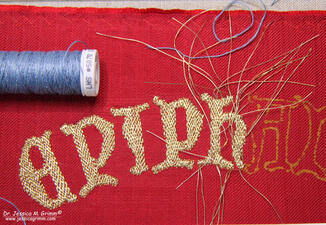
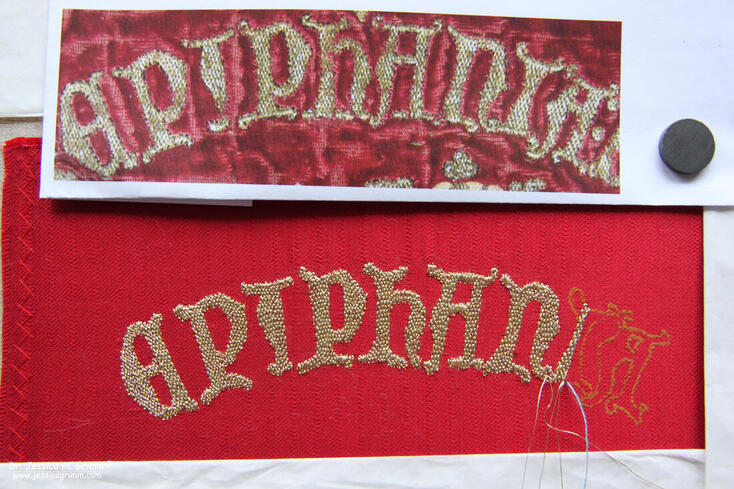
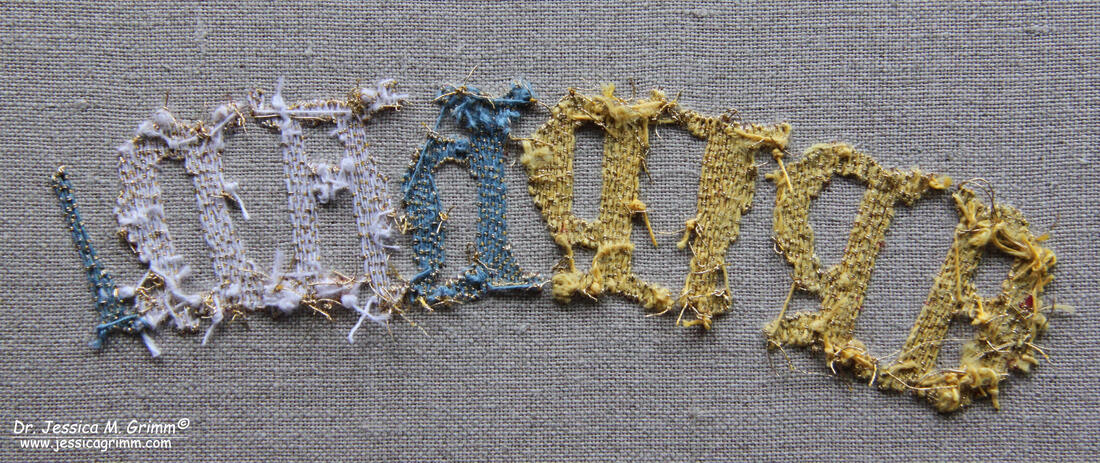
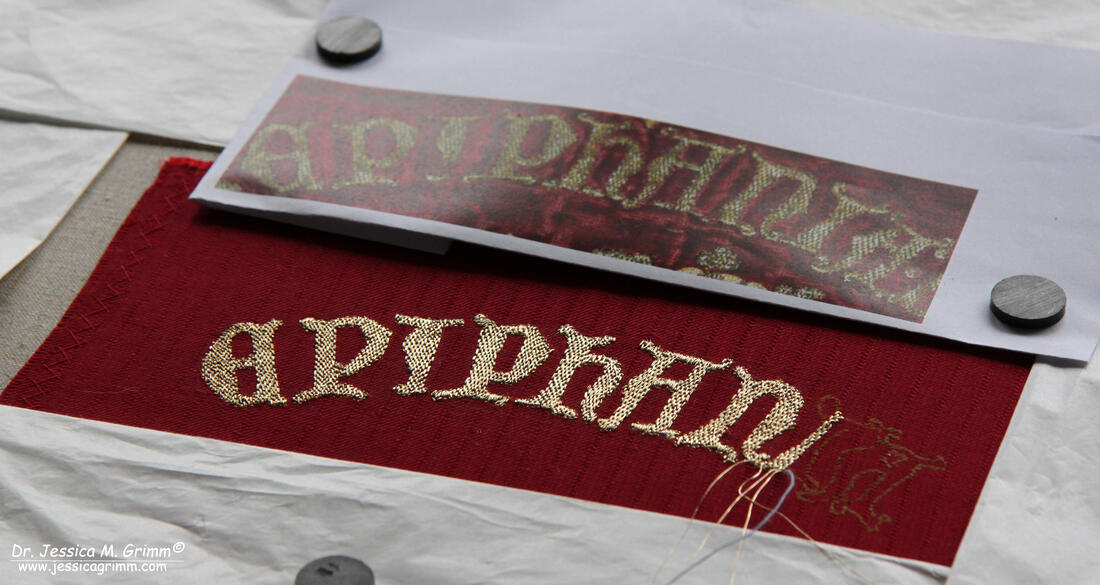





 RSS Feed
RSS Feed